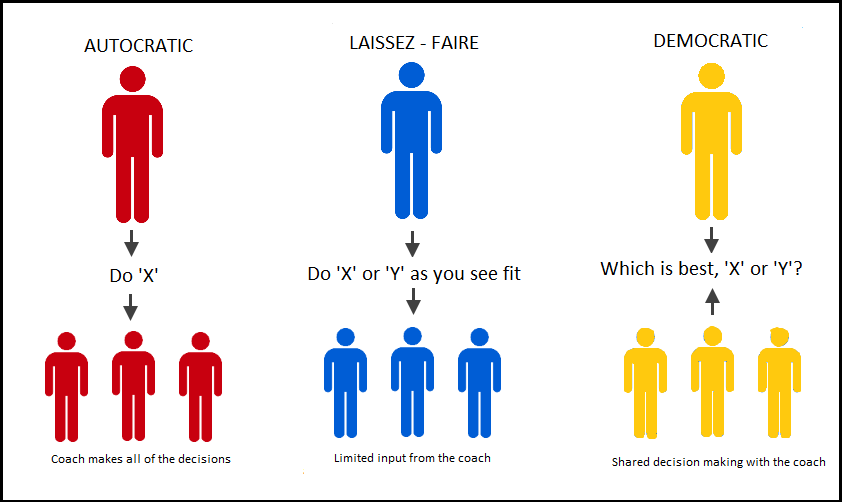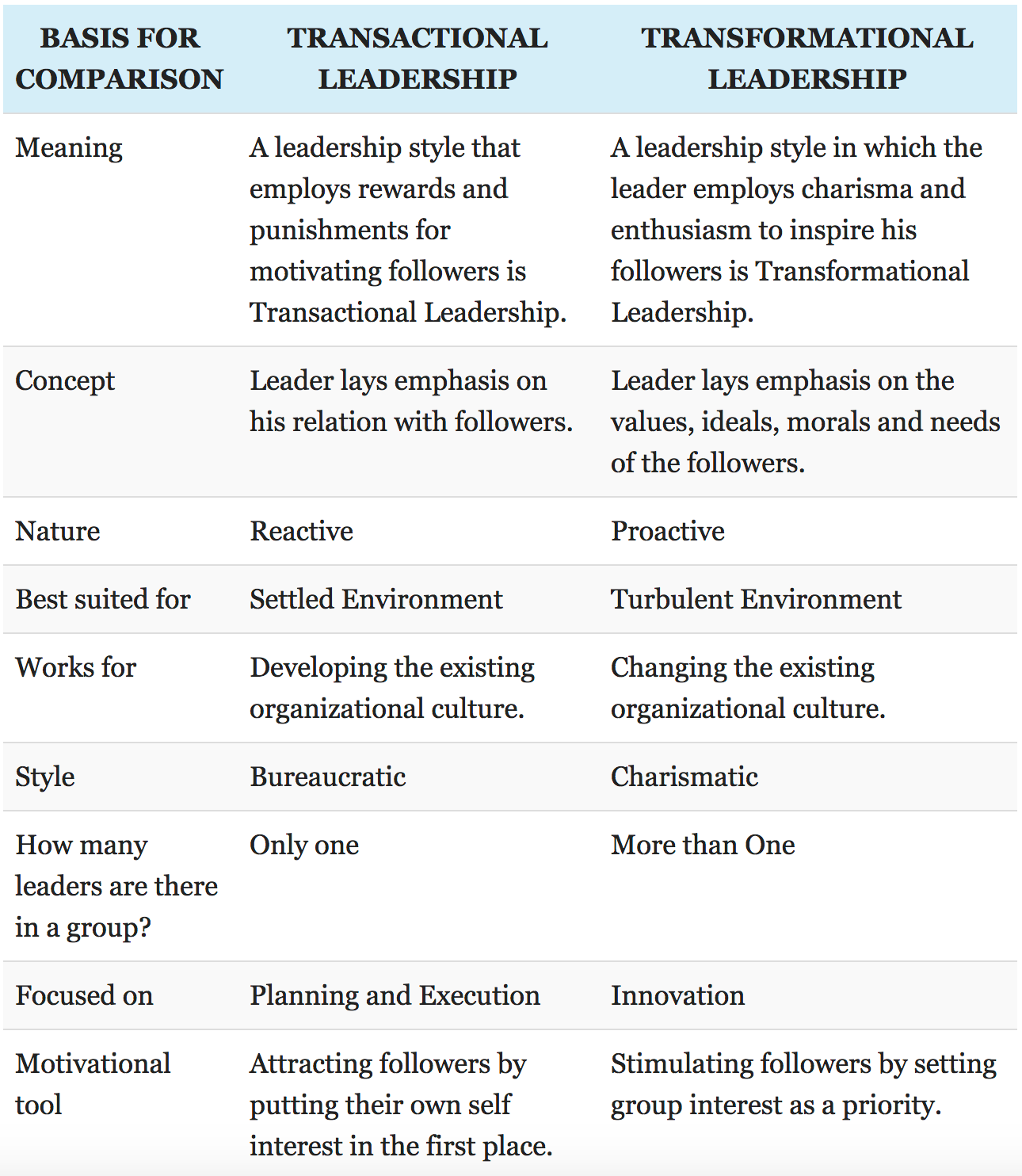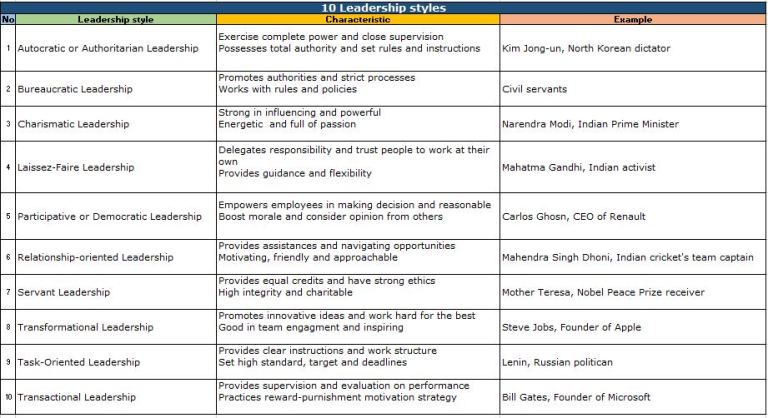I already wrote about what a leader is and what leadership means in my previous post about what makes a leader. But did you know that there are different leadership styles?
Leadership styles are classifications of how a person behaves while leading a group. To be effective as a manager, you might use several different leadership styles at any given time.
If you google a little, you’ll find a hundred thousand articles about leadership styles. In this post, I wanted to deepen just a little into different forms, based on different categorizations available.
Management and leadership
Before starting, it is essential not to misunderstand what leadership and management are.
Speaking briefly, a manager handles resources intending to achieve an outcome. A leader has to define the path that will drive to a result. It has a vision and has to convince others about it.
Management and leadership imply different skills. But they are often overlapping. And sometimes, some managers do not practice leadership while some people lead without a managerial role.

Do you think a good manager with low leadership skills could be a company CEO? Sure. It happens that when innovative startups grow, get stable, and have less uncertainty, sometimes require profiles less visionary and more manager.
Traditional Leadership style model
This model is said to be the most used and known. In 1939, a group of researchers led by psychologist Kurt Lewin set out to identify different styles of leadership.
They established three major leadership styles based on people management: Autocratic, Democratic, and Laissez-faire.

Objectively speaking, there is no right or wrong leadership style. Both are useful depending on the situation, environment, company, or goals.
For instance, the hierarchical style is better with low uncertainty, when there is no need for innovation, and efficiency is critical.
But on the other hand, when agility is a competitive edge, and innovation is the way, we should apply styles and methodologies that give employees more autonomy, taking more risks.

The researchers found that democratic leadership tended to be the most effective at inspiring followers to perform well. But of course, this was conducted in 1939.
If you’re interested in any of these classifications, you’ll find information, examples, pros/cons and benefits, and more details in the following links:
- What is Autocratic Leadership? How Procedures Can Improve Efficiency
- What is Democratic/Participative Leadership? How Collaboration Can Boost Morale
- What is Laissez-Faire Leadership? How Autonomy Can Drive Success
Those styles are the ones I first studied, and it is also the reason why I am writing this post. The first time I saw this classification, I wasn’t convinced at all, and that’s why I wanted to look for other models available.
Additional leadership styles
While further research has identified more distinct types of leadership, Lewin’s early study was very influential and provided a springboard for more defined leadership theories.
You’ll find many different styles, such as the Paternalistic style, but probably the most well-known patterns identified later are Transformational and Transactional leadership.

A transformational leadership style creates a vision and inspires subordinates to strive beyond required expectations, whereas transactional leadership focuses more on extrinsic motivation for the performance of job tasks.
Transformational leadership would influence attitudes by inspiring acceptance of innovation through the development of enthusiasm, trust, and openness. In contrast, transactional leadership would lead to the approval of change through reinforcement and reward.
You could find more details about both here in this post from Florida Tech.
Fostering collaboration
I found the evolution of traditional leadership styles in this HBR article Are You a Collaborative Leader? from Herminia Ibarra, professor, author, and authority on leadership and career development (Thinkers50).
The article focuses on how companies nowadays are working more collaboratively than ever before, “fostering communication across the entire organization and aligning better the whole workforce around its mission“.
I like much more Collaborative than Laissez-faire naming, which sounded to me a bit derogatory. If you read them, you’ll see differences between laissez-faire and collaborative in terms of authority or decision making.

The article states that people who used in the past the “command and control” style could experience difficulties adapting to the new realities. Also, managers who try to lead by consensus can quickly see decision making and execution go slower.
In the article, they discovered that a collaborative leader requires to have strong skills in these four areas: playing the role of connector, attracting diverse talent, modeling collaboration at the top, and showing a steady hand to keep teams from getting mired in debate.
The research also suggests that it is possible to learn these skills. And at the same time, they notice that crafting the right leadership style isn’t easy at all.
The main difference from Lewin’s is that effective collaborative leaders assume a substantial role in directing teams. Also, assign clear decision rights and responsibilities so that at the appropriate point, someone can end the discussion and make a final call.
Although constructive confrontation and disagreements are encouraged, battles aren’t left raging on. If there’s no agreement in time, the person chairing the meeting makes the decision.
Leaders today must be able to harness ideas, people, and resources from across boundaries of all kinds. That requires reinventing their talent strategies and building secure connections both inside and outside their organizations.
Situational Leadership
It turns out that you may need to adjust your style based on the people you’re managing, the context in which you’re leading, or the external pressures you’re under.
According to STU university, there are two models for Situational or Adaptative Leadership, the one described by Daniel Goleman and another by Ken Blanchard and Paul Hershey.
I recently wrote an article focused on the second one, Blanchard-Hershey, and its evolution. The Situational Leadership Model has two fundamental concepts: leadership style and the individual or group’s performance readiness level, also referred to as maturity level or development level.
If you’re interested in knowing more, I recommend you to check my post Coaching and Situational Leadership: Adapting Your Style.
Goleman’s Leadership classification
Daniel Goleman’s published first in Harvard Business Review article Leadership that Gets Results. He identifies six leadership styles based on emotional intelligence values: Commanding, Visionary, Affiliative, Democratic, Pacesetting, and Coaching.
All of them come from a study conducted by him where 3000 managers filled a test to determine what it takes to become an effective leader. The results of this study outlined the six different leadership styles, each stemming from an element of emotional intelligence.

According to Daniel, truly effective leaders are distinguished with a high degree of emotional intelligence. And EI is the ability to understand and manage your own emotions and those of the people around you.
Five key components are Self-awareness, Self-discipline, Motivation, Social skills, and Empathy. You could identify the key elements in all six styles.

Again, there is no right or wrong, black or white. Depending on the situation, weighing the pros and cons, you should end using a particular leadership style or a combination of them.
For instance, visionary, affiliative, democratic, and coaching leadership styles tend to have a favorable influence in the workplace as it promotes harmony and employee satisfaction.
On the other hand, authoritative and pacesetting leadership styles may get things done effectively. Still, they will also promote a hostile, tense work environment that might kill motivation and creativity in the workplace.
Merging all together
We’ve seen that Leadership styles could vary based on multiple factors. It could also be classified based on people management, power or authority, behavior, emotional intelligence, focus, relationship with followers, etc.
I started this post with Lewin’s classification, leadership patterns influenced by it, evolutions based on new organizations and methodologies, and also included Goleman’s classification.
Robert Tannenbaum and Warren Schmidt saw leadership as a continuum. And they also recognized that the most appropriate leadership style at any time depended upon a variety of factors, such as the leader’s personality and the situation they faced. But the style should reflect the situation rather than personality.
In the following image, you have a complete vision of most of the leadership styles listed above.
These images come from this article from the Institute of Leadership & Management. Also, I decided to include the caption from this blog with examples of a person who applied each leadership style.

Bill Taylor’s 4 Leadership styles
So far, we’ve reviewed the most common Leadership styles included in most articles and researches. Bill Taylor is an entrepreneur and author, cofounder of Fast Company magazine. He published another view of leadership styles in the following HBR article.
Based on his experience with leaders from different fields, he was able to identify four leadership styles. They capture different approaches to the whys and hows of leadership. He also identified 16 questions that might help us figure out which style suits best.
The 4 leadership styles are The Classic Entrepreneur, The Modern Missionary, The Problem Solver, the Solution Finder. Here you could find them in this cool infographic from HBR Ascend.
Probably you are interested in the questions to know what kind of leader are you. Here is the link to the 16-question quiz from Bill that will let you know which style fits you.
Again, as happened in previous researches, there are no right or wrong answers to the questions. These questions should help us figure out which style of leadership fits who we are and what we are trying to achieve.
The more we understand about ourselves — what we truly care about, how we make decisions, why we do what we do — the more effective we will be at marshaling the support of others for what we hope to achieve.
So, what’s your leadership style?
Even there are very differentiated styles, as happens with personalities, we could be in between different styles, and we could learn to adapt to different environments or situations. So even if our character is more prone to a leadership style, we could and should apply others.
All leadership styles share skills, behaviors, or emotional intelligence components. But it is fascinating to identify them and learn from the previous studies that coined them.
Also, I found it very useful to see which styles fit our personality and how we adapt our skills and behavior based on different scenarios and situations.
Now it’s your turn, do you know which styles fit who you are? And which ones are you usually using?
I hope you liked it. If so, please share it! Do not hesitate to add your comments. And, if you want to stay up to date, don’t miss my free newsletter.
Thanks for reading.
Also published on Medium.
Join the FREE Newsletter
Also published on Medium.

Well written paper,,, My opinion is that each of these leadership styles are employed but at different times and differing business situations. If you are working with R&D guys it might be the visionary style. If you are working with people racking and stacking servers at a data center, it would be different. Again, thank you Brian.
No one style of leadership outweighs another because you leadership style depends on the audience, environment, and ultimately individual(s) you’re shaping to be independent thinkers and doers. You should not be tyrannical and overbearing because you’ll drive good people away nor should you be so easy going there’s no direction or clear path forward. It’s all about balance, knowing your audience/troops, and understanding the end-goal.